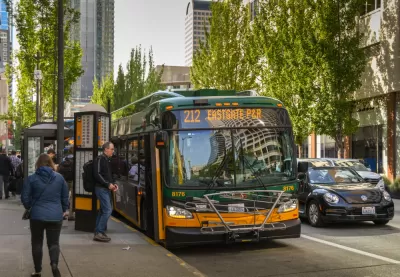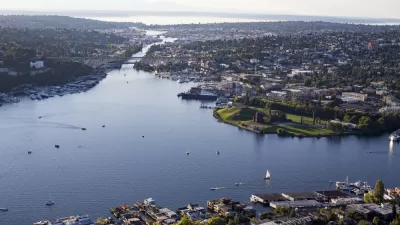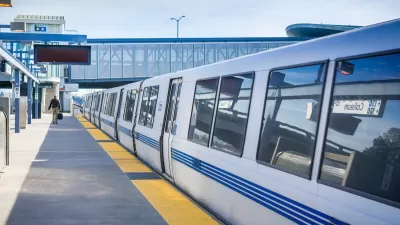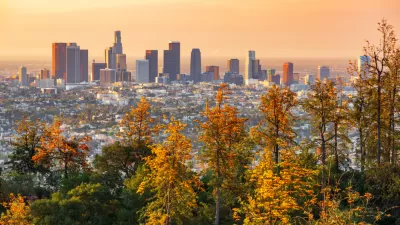Agency staff says the Puget Sound regional long-range plan won’t achieve 2030 sustainability goals set by the state.

The recently adopted Puget Sound Regional Council (PSRC) long range transportation plan won’t do enough to meet the region’s 2030 climate goals, reports Ryan Packer for The Urbanist. This is according to a report from the Council’s own staff, which revealed “a projected 13% gap between anticipated emissions and the goal of reaching a 50% reduction of the region’s 1990 greenhouse gas emissions by 2030, even with the help of numerous newly adopted statewide climate policies.”
Packer outlines the analysis made by PSRC staff, which claims that nixing planned road expansion projects in the region would not reduce emissions because that would increase congestion, a claim labeled by The Urbanist as “myth #1 on our list of five wrong planning claims around highway expansion that are causing the US to fail to make progress on its climate goals.” The predictive models used by PSRC also claim that improving transit wouldn’t make much impact, assuming that people would continue to drive at roughly the same rate, and that the most impactful initiative would be a per-mile road charge, an action that would require legislative action at the state level.
These predictions matter because the analysis is meant to inform how federal funding is allocated. “If the models show accelerating transit investments gets the region closer to its climate goals, there will be an effort to tilt funding in that direction.”
FULL STORY: Adopted Regional Transportation Plan Isn’t Aligned With 2030 Climate Goals

Planetizen Federal Action Tracker
A weekly monitor of how Trump’s orders and actions are impacting planners and planning in America.

Congressman Proposes Bill to Rename DC Metro “Trump Train”
The Make Autorail Great Again Act would withhold federal funding to the system until the Washington Metropolitan Area Transit Authority (WMATA), rebrands as the Washington Metropolitan Authority for Greater Access (WMAGA).

The Simple Legislative Tool Transforming Vacant Downtowns
In California, Michigan and Georgia, an easy win is bringing dollars — and delight — back to city centers.

The Small South Asian Republic Going all in on EVs
Thanks to one simple policy change less than five years ago, 65% of new cars in this Himalayan country are now electric.

DC Backpedals on Bike Lane Protection, Swaps Barriers for Paint
Citing aesthetic concerns, the city is removing the concrete barriers and flexposts that once separated Arizona Avenue cyclists from motor vehicles.

In These Cities, Most New Housing is Under 441 Square Feet
With loosened restrictions on “micro-housing,” tiny units now make up as much as 66% of newly constructed housing.
Urban Design for Planners 1: Software Tools
This six-course series explores essential urban design concepts using open source software and equips planners with the tools they need to participate fully in the urban design process.
Planning for Universal Design
Learn the tools for implementing Universal Design in planning regulations.
Smith Gee Studio
City of Charlotte
City of Camden Redevelopment Agency
City of Astoria
Transportation Research & Education Center (TREC) at Portland State University
US High Speed Rail Association
City of Camden Redevelopment Agency
Municipality of Princeton (NJ)





























